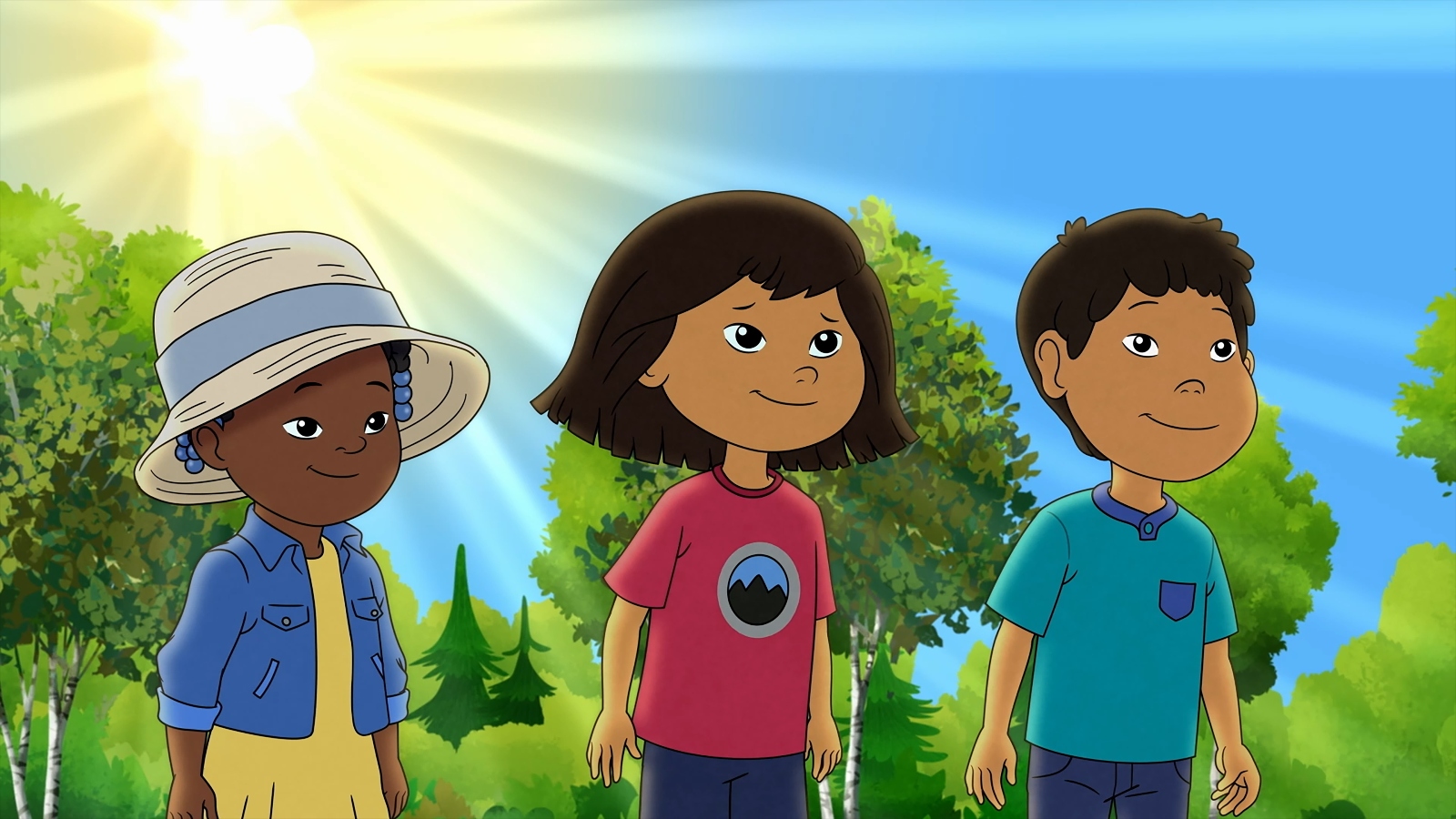This article originally appeared in Nexus Media News.
Olivia Dreizen Howell wasn’t seeking out a climate lesson when she and her kids, aged 7 and 9, tuned into Molly of Denali, a popular children’s show on PBS.
But there it was: Molly, a 10-year-old Alaska Native and vlogger from the fictional village of Qyah, goes with her friends to visit an old clubhouse. Upon arriving, they find it has begun to sink into the ground. The episode, “Not So Permafrost,” follows Molly as she uncovers why her refuge is sinking in the first place. It served as an unexpected opening for Dreizen Howell and her family to discuss the climate crisis.
“It helped us to talk about different cultures, how climate change impacts cold climates and how we can combat it,” said Dreizen Howell, who lives in Huntington, New York.
Like many parents, Dreizen Howell worries for her children’s future on a hotter planet. By the time her children are in their thirties, New York will have, on average, 57 days above 90 degrees per year, compared to 18 on average today.
But outside of talking about science lessons at their Montessori school, she hadn’t discussed the crisis with them.
“The show helped us discuss it,” Dreizen Howell says. “We watched the show at night before bed, and it was a nice moment to talk about how the earth is different now and what we can do to help keep our planet going strong.”
Increasingly, children’s programs are taking on the climate crisis. In April, Apple TV released Jane, a show about a young environmentalist who idolizes Jane Goodall and tracks down endangered species. On Netflix’s Octonauts: Above and Beyond, the titular team travels the world protecting animals and habitats from a changing climate. Other shows like Sesame Street and PBS’s City Island have also aired climate-related episodes.
Experts say shows like these can help families find the language to discuss a stressful subject.
“We need to be talking about [the climate crisis], and programming can be a way for parents to ask questions about what kids observed in the show and see what comes up,” said Erica Smithwick, a professor at Pennsylvania State University and member of Science Moms, an advocacy group.
But these shows are exceptions from the norm, said Alisa Petrosova, associate director of climate research and consulting programs at Good Energy, a nonprofit that aims to increase the number of climate storylines on film and television.
In 2022, Good Energy published an analysis of nearly 38,000 scripted TV shows and films. “Only 2.8 percent [of analyzed scripts] included key terms around climate change,” Petrosova said. Key terms included “climate change”, “fracking”, “global warming” and “save the planet,” among others. Good Energy aims to get that figure up to 50 percent of all shows — for children and adults alike — by 2027.
(Good Energy has currently paused consulting projects with the Alliance of Motion Picture and Television Producers to adhere to the ongoing Writers Guild of America strike, although it is consulting with independent creators within strike parameters.)
Wanting to hide scary things like the climate crisis from children is a natural caregiver response, said Leslie Davenport, a therapist specializing in climate-related mental health issues. But avoiding the topic can do more harm than good, especially since children likely already know and are concerned about climate change.
“There are a lot of sensitive, almost taboo topics, like drugs, sex and death,” Davenport said. “But when caregivers avoid conversations, it can create more anxiety.”
According to a 2022 report by Siena College Research Institute, nearly 8 in 10 Americans agree that climate change is a “very” or “somewhat serious” problem, but only about half of parents with children (49 percent) said they had talked with their children about it. Yet, 3 in 10 respondents with children said their children had told them that they worry about climate change.
Yatibaey Evans, the creative producer of Molly of Denali, who is herself Alaska Native, said the show has helped raise awareness about how Alaskans are dealing with climate change and has sparked intergenerational conversations about the crisis.
“We’re seeing, on a large scale, more folks wanting to learn how we can help create resilience in our children as the environment is changing around us,” Evans said. “We’re also seeing how we can gain strength from the wisdom of our ancestors.” (As a non-commercial public television program, Molly of Denali is not affected by the WGA or actors guild strikes.)
Children’s programming about climate change doesn’t have to be all doom and gloom — and in fact, it shouldn’t be, advocates say. “Neuroscience has shown that people learn in a different way when they’re laughing and dancing,” Petrosova said. “It’s not like every single climate narrative needs to have the reaction of laughter, but it is still important to figure out what are the most entertaining ways, dramatic or comedic, to incorporate the stories.”
Of course, no one’s suggesting that screens should do all the work of educating children on the climate crisis — or assuaging their anxiety. The American Academy of Pediatrics recommends limiting screen time for children under 2 years old to supervised, educational programming and to 1-3 hours per day for children between 2 and 5.)
Climate programming needs to be accompanied by conversations, especially given the gravity of the topic, Smithwick said, adding that adults can help young people avoid climate doom and anxiety by highlighting ways people are coming together to solve problems.
“I do worry that, in general, communication on climate change is very dire,” she said. “[The situation] is dire, but at the same time, I’m inspired every day by the solutions I’ve seen, and it’s really important for kids to understand that message, too.”



